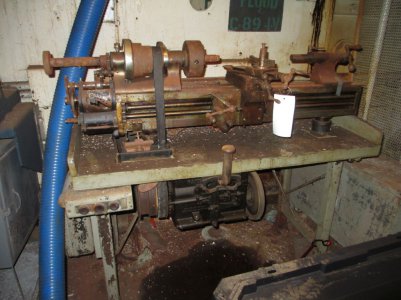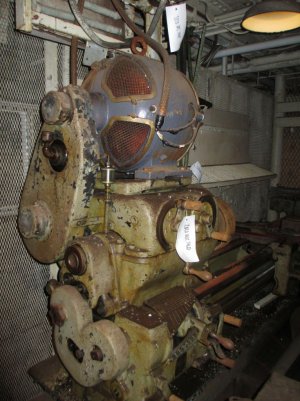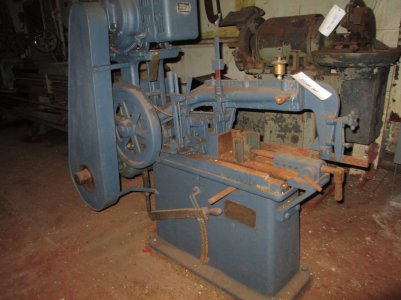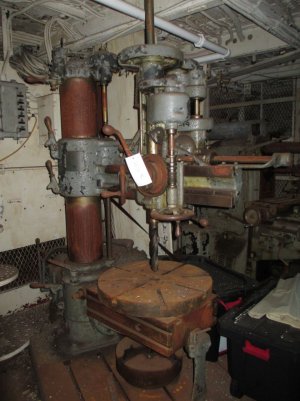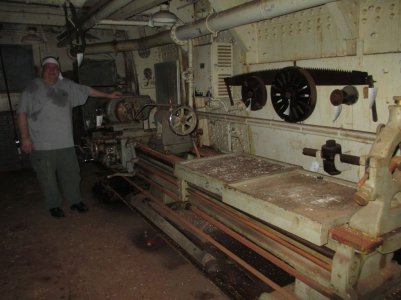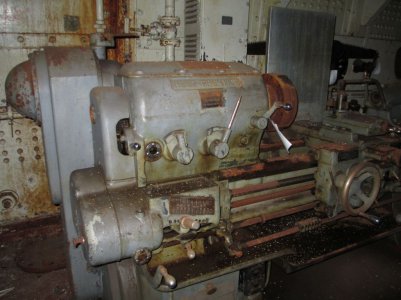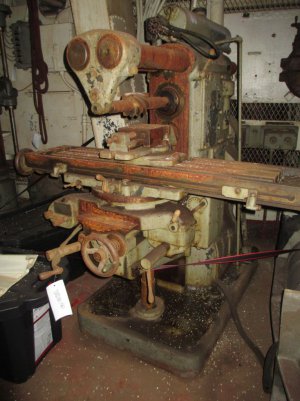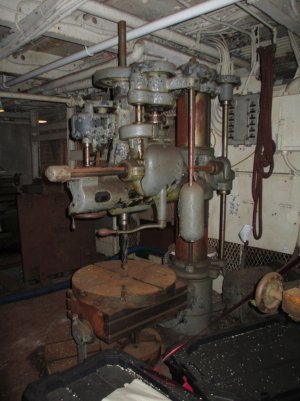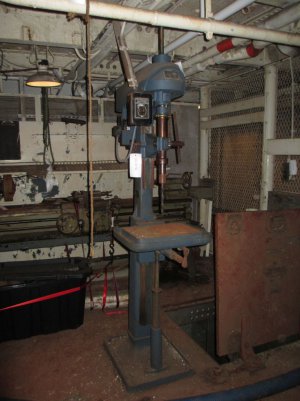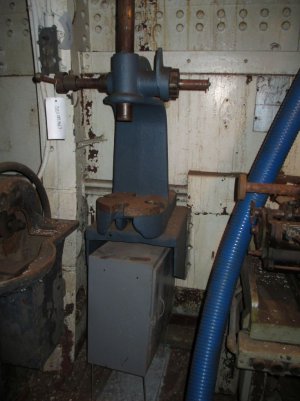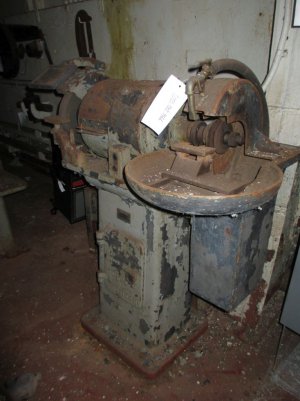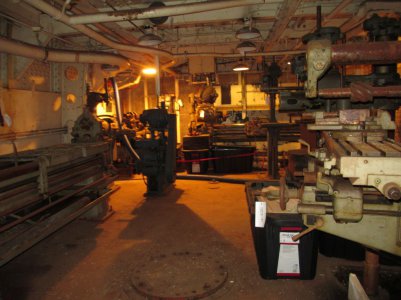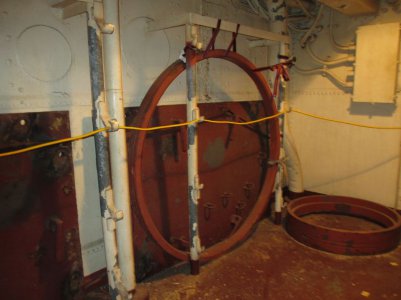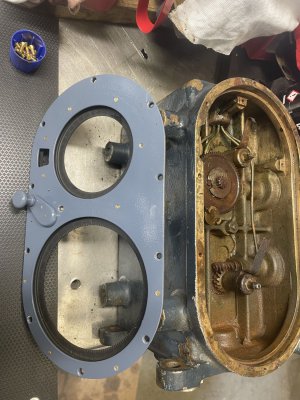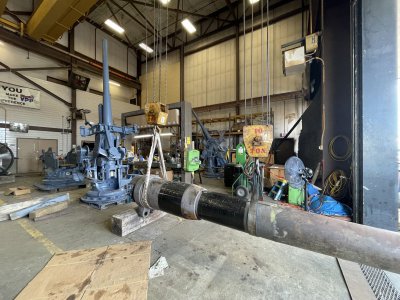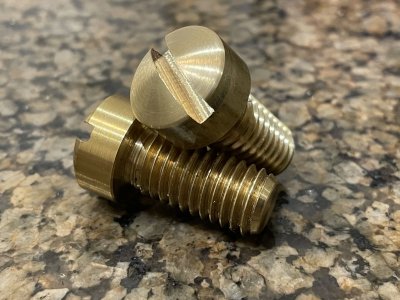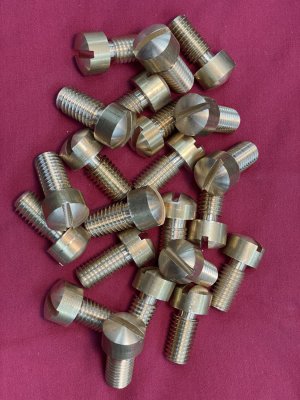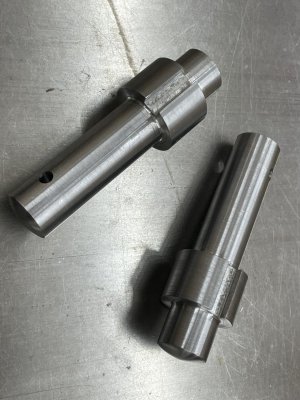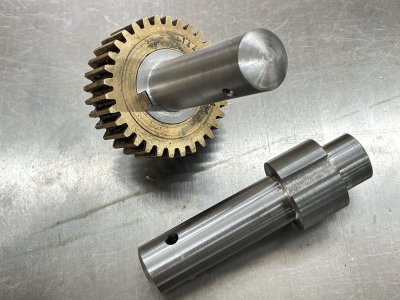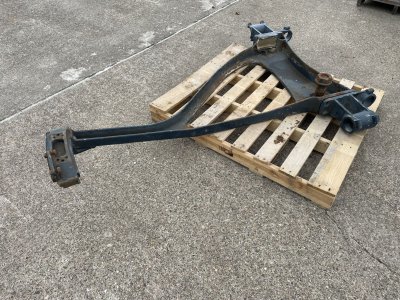Clearly the restoration of a battleship is not "my" project but I have become involved in it. I'm just one of many volunteers donating time and skills to honor the last remaining Dreadnought and the Men that served on her. The sailors that served on the Texas are always on the minds of the volunteers as we work. Design work on the ship began in 1910, the keel was laid in 1911 and she was launched in April of 1913. After completion the Navy accepted her in April of 1914.
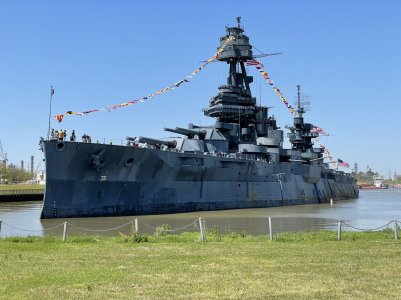 USS Texas March, 2022
USS Texas March, 2022
The ship itself is in dry dock in Galveston right now undergoing major shipyard repairs. The deck guns for the most part along with radio equipment, gun directors, nav lights, searchlights and other hardware were all removed and brought to a facility a few miles inland prior to the ship being moved to the dry dock. Because of their size and the difficult of extracting them without damaging the surrounding structure the 5" guns were removed after the ship was in the dry dock. My involvement is helping to clean and repair the guns. When I became involved all of the 20mm Oerlikon cannons had been restored, The first three of ten 3" AA guns were in progress and the first of eight Quad 40mm Bofors had just been fully disassembled. Just for a sense of scale, a 3" AA gun on its mount weighs around 8,000 pounds (3600+ Kg). A complete Quad 40 Bofors weighs about 24,000 pounds (10,900 Kg) and a 5 inch/51caliber gun on its mount is about 25,000 pounds (11,300 Kg). The bare barrel of a 5" gun weighs 10,770 pounds (4885 Kg).
The goal for all of the guns is that visitors to the ship will be able to elevate and train (side to side motion) all of them with their hand cranks. At the outset some of them had gears and shafts that were hunks of rust. Getting them to move easily by hand is a big undertaking. Unfortunately the Navy prohibits training of the five turrets of dual 14" guns. Something about Texans and large guns, I suppose.
I also have some photos of the dimly lit ship's machine shop. One of the goals of the paid employees is to get at least one lathe operational so we can use it for repairs. The ship electrical systems were originally all DC power but that caused problems in some areas including the radios and internal communications so later there were DC motor powered AC generators installed at the places where AC was needed and large AC generators eventually installed for general ship use. Much of the lighting on board is still run by the original wiring.
 USS Texas March, 2022
USS Texas March, 2022The ship itself is in dry dock in Galveston right now undergoing major shipyard repairs. The deck guns for the most part along with radio equipment, gun directors, nav lights, searchlights and other hardware were all removed and brought to a facility a few miles inland prior to the ship being moved to the dry dock. Because of their size and the difficult of extracting them without damaging the surrounding structure the 5" guns were removed after the ship was in the dry dock. My involvement is helping to clean and repair the guns. When I became involved all of the 20mm Oerlikon cannons had been restored, The first three of ten 3" AA guns were in progress and the first of eight Quad 40mm Bofors had just been fully disassembled. Just for a sense of scale, a 3" AA gun on its mount weighs around 8,000 pounds (3600+ Kg). A complete Quad 40 Bofors weighs about 24,000 pounds (10,900 Kg) and a 5 inch/51caliber gun on its mount is about 25,000 pounds (11,300 Kg). The bare barrel of a 5" gun weighs 10,770 pounds (4885 Kg).
The goal for all of the guns is that visitors to the ship will be able to elevate and train (side to side motion) all of them with their hand cranks. At the outset some of them had gears and shafts that were hunks of rust. Getting them to move easily by hand is a big undertaking. Unfortunately the Navy prohibits training of the five turrets of dual 14" guns. Something about Texans and large guns, I suppose.
I also have some photos of the dimly lit ship's machine shop. One of the goals of the paid employees is to get at least one lathe operational so we can use it for repairs. The ship electrical systems were originally all DC power but that caused problems in some areas including the radios and internal communications so later there were DC motor powered AC generators installed at the places where AC was needed and large AC generators eventually installed for general ship use. Much of the lighting on board is still run by the original wiring.


